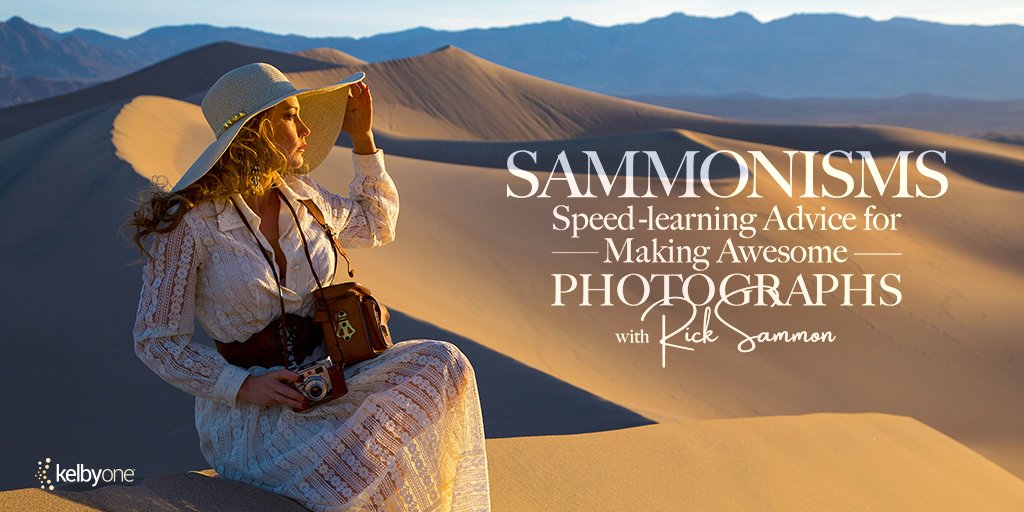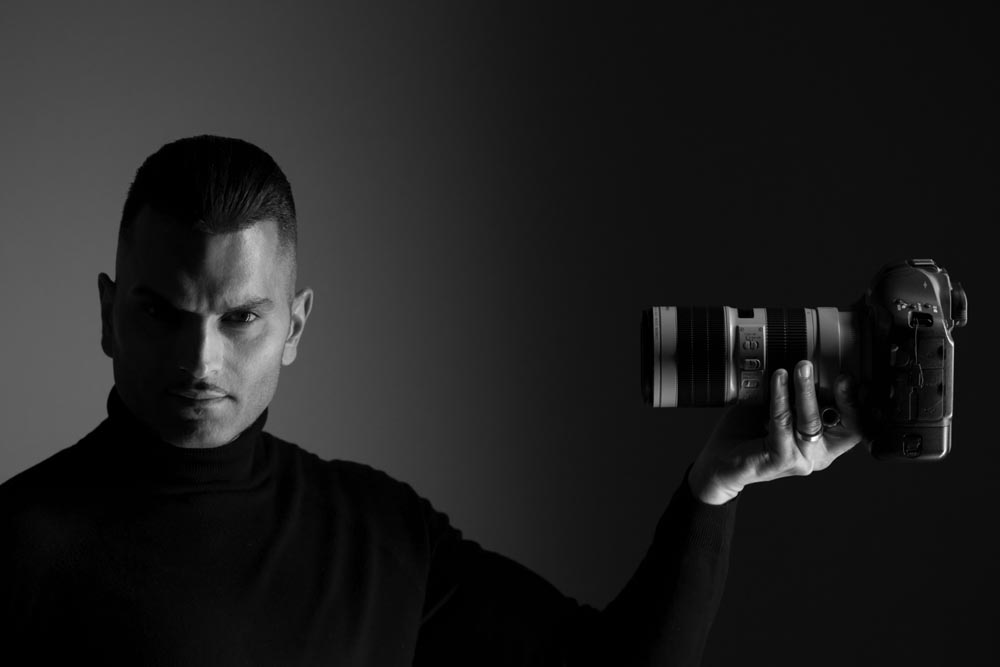
How I Made That Image
IN THE BEGINNING…
When I started in this incredible industry over 10 years ago, I hunted for inspiration. I really had to go out of my way to find images that made me say “Wow! How the hell did they do that?”
In 2020, we are bombarded by information and image overload, whether we search for it or not, with all of the exponential growth of social media, Google and AI. All we have to do is mention something to someone in passing and our smart devices will be listening, only to freak us out at the first opportunity with its findings in the form of posts, pop-ups and adverts the moment we look at our screens.
HOPELESSNESS IS IRRELEVANT
How is this relevant to the topic of this article you may ask? Today we face an onslaught of outstanding and awe inspiring images on social media that can leave many photographers feeling paralyzed with fear that they’re not capable or good enough to compete in a marketplace that has never been more competitive or fierce.
That said, there really is no need to worry; help is at hand! Particularly with amazing resources like Scott Kelby’s blog, its vast reservoir of knowledge and experience; there’s really no reason to feel like you have to go it alone, or indeed feel alone period.
PROVENANCE
In this feature I want to share how some of my award-winning images were created by breaking down my thought processes on the shoot, technical settings, and lighting setups to try and provoke thought and inspire ideas for you. The key here is to understand my thought process; after all, camera settings and lighting setups replicated in isolation are as good as knowing nothing about the image at all if you don’t understand what triggered certain ideas or decisions under the pressure of the situation.
This is the essence of authenticity, of provenance; using your vision, experience, expertise and ability to cope under pressure… basically you’re extracting the best of your personality and ability as a professional and as an artist and imbuing the image with something truly unique.
This is my approach with each of these images – I use what I know about my clients, their story, my equipment and my understanding and belief in my own tastes; I know what appeals to me and what doesn’t to create a solid start point.
‘FROM LONDON WITH LOVE’
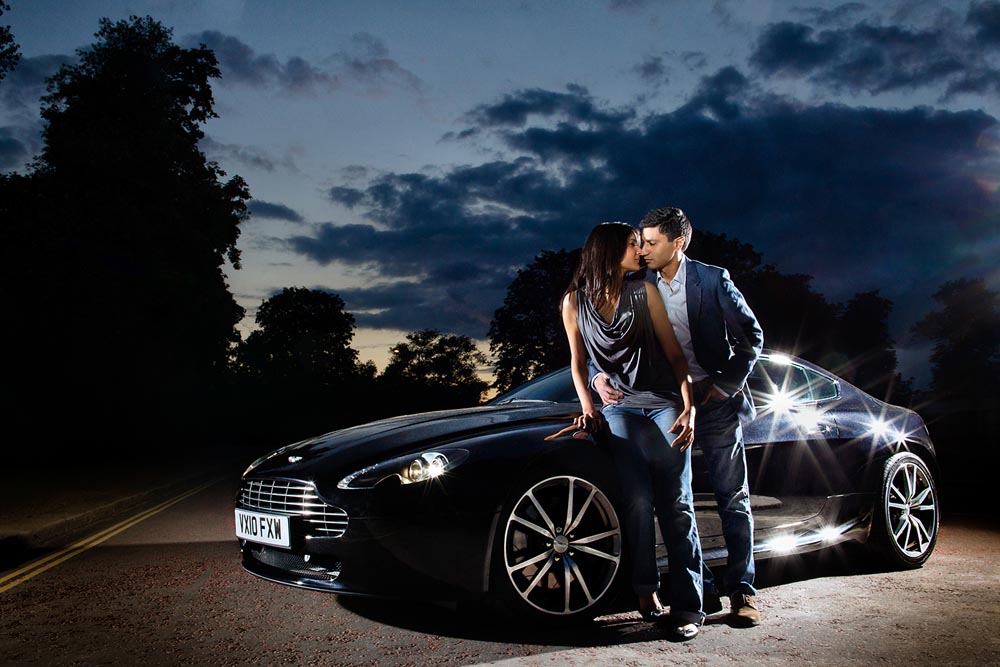
For example, this image was from the couple’s engagement shoot in London’s Hyde Park. They wanted an image that embodied their love, their cool relaxed demeanour, their style as a couple and their lifestyle which was achieved through the way I posed them alongside his car (which in this case says a lot about him) in an area of London in which they live. The emotion in this image is embodied in their pose, connection and expressions and enhanced with dramatic lighting.
I only had moments to set this image up because of the extremely tight security in London. Despite this, I used 3 lights to create this image because the impact of the concept demanded it. I used one gridded flash to camera left in front of the car set low down to illuminate the front of the Aston Martin and to provide a rim light for the bride. I used one unmodified bare bulb flash to camera right at a high angle to light the rear of the car and provide a rim-light to the groom. The third light had a quarter CTO gelled light on the couple to give them a soft, warm, comforting tone. I had to slightly underexpose for the failing light of the sky by stopping down to f/11 and setting the shutter to the cameras’ sync speed at the lowest possible ISO. The small aperture had the added effect of creating the star bursts from the light reflecting off the car in camera.

‘DIVINE LIGHT’
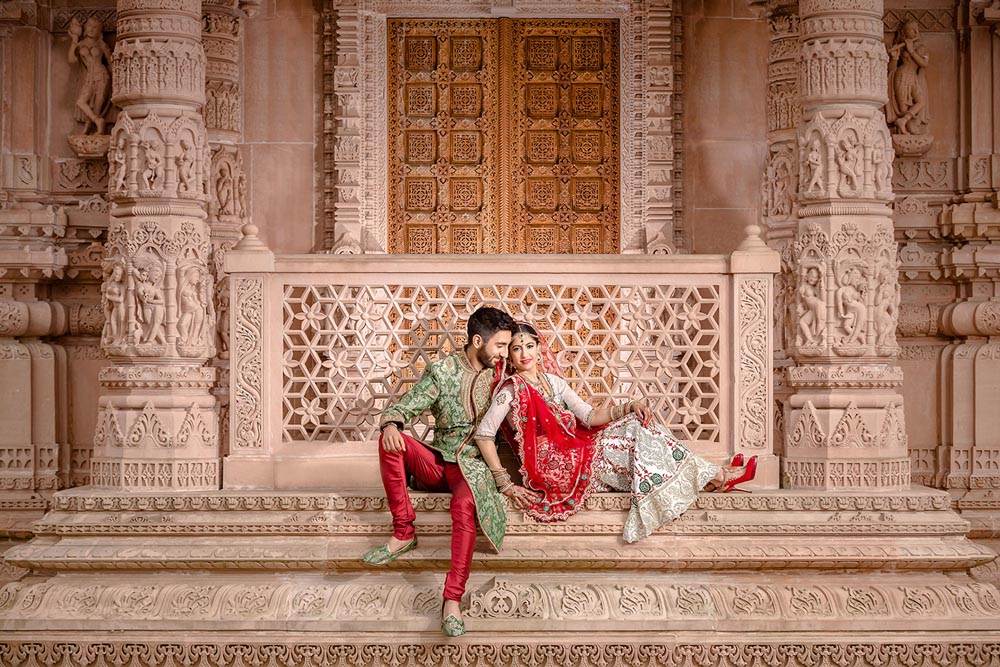
This portrait of a couple on their wedding day at the Hindu Temple was created within a very short window of opportunity which is very common with Indian weddings.
I helped them up onto the ledge which was 1.5m from ground and then posed them in a way that portrayed their bond and showcased their beautiful attire. I used three Profoto heads here – two of them to camera right: One of them mounted to a tall boom stand 4m high and modified by a shoot-through umbrella to fill the scene with soft light to create a base for the exposure; the second light was modified by a gridded Profoto zoom reflector (zoomed in) to accentuate the couple and draw focus to them. The third light was behind them on the balcony on a low power to fill in any shadows cast by the columns from the frontal lights.
I shot this handheld from approximately 12m away through a 70-200 lens to correct the perspective and parallax as well as minimise distortion as much as possible. Here I didn’t use the maximum sync speed because I didn’t want too much separation between flash and ambient light, but instead I wanted to create a believable balance of the two, to complement this I used a relatively wide aperture because didn’t want the intricate Indian architecture to overpower the image with too much sharpness in the background; f/5.6 shows enough detail yet maintains a pleasing softness to the image.
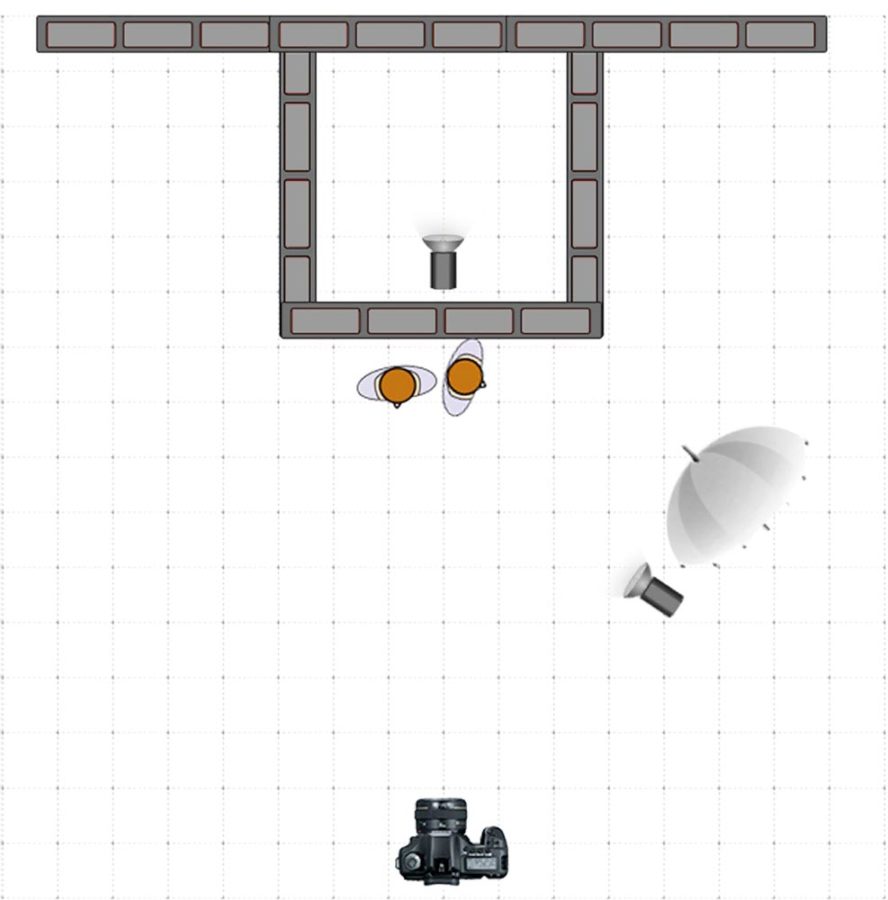
‘VOGUE’
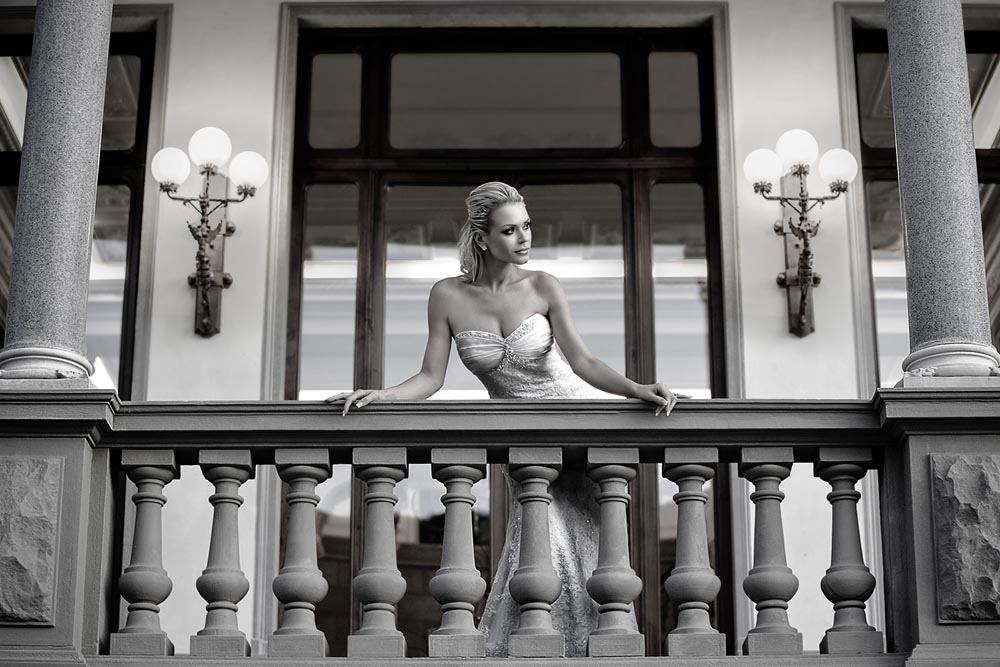
At this wedding in Lake Como in 2011, the bride gave me the challenge of creating images that could be straight out of Vogue… no pressure then!
I posed her on the balcony which was 4 or 5 metres from the ground and lit her with a single Profoto flash to camera right modified with a 5ft octabox held in the air on a boom stand by my assistant to bring the light just above her eyeline. The ambient/flash balance was more of a factor in this image in order to create a classic timeless image that isn’t stylised by overdramatic lighting, and as you can tell by the camera settings it’s biased toward ambient light with the slower shutter speed and higher ISO, and an aperture setting that gives the image a delicate softness.
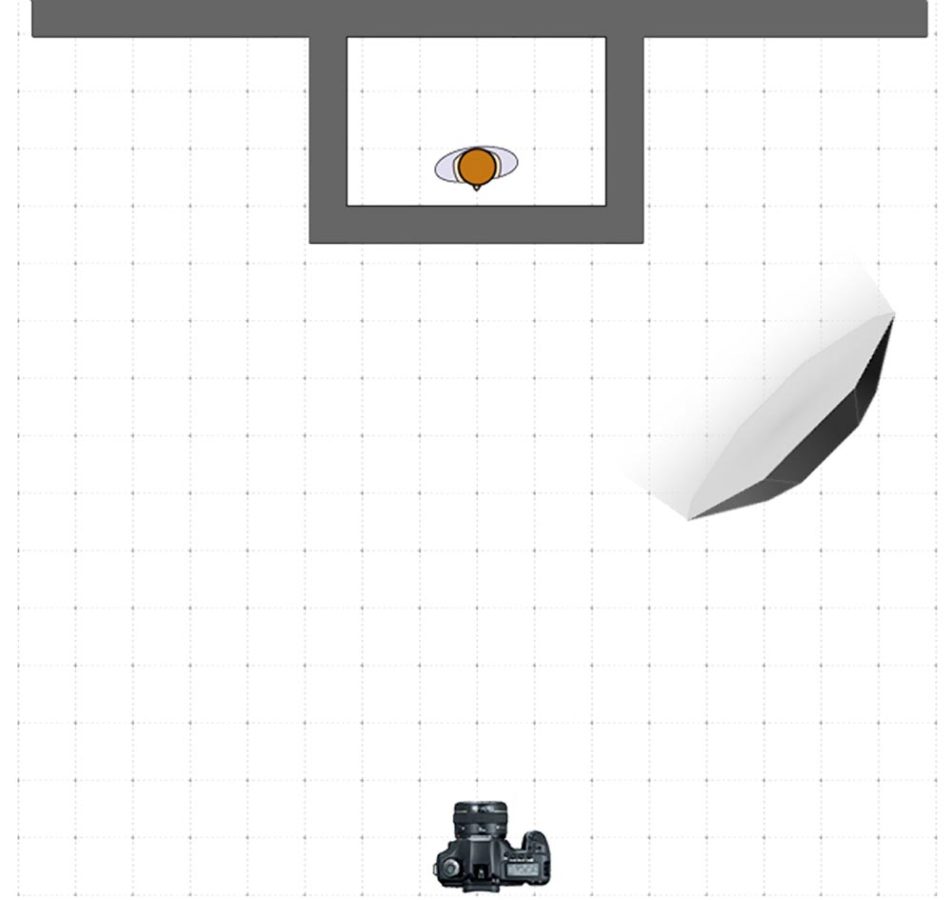
‘THROWING LIGHT’
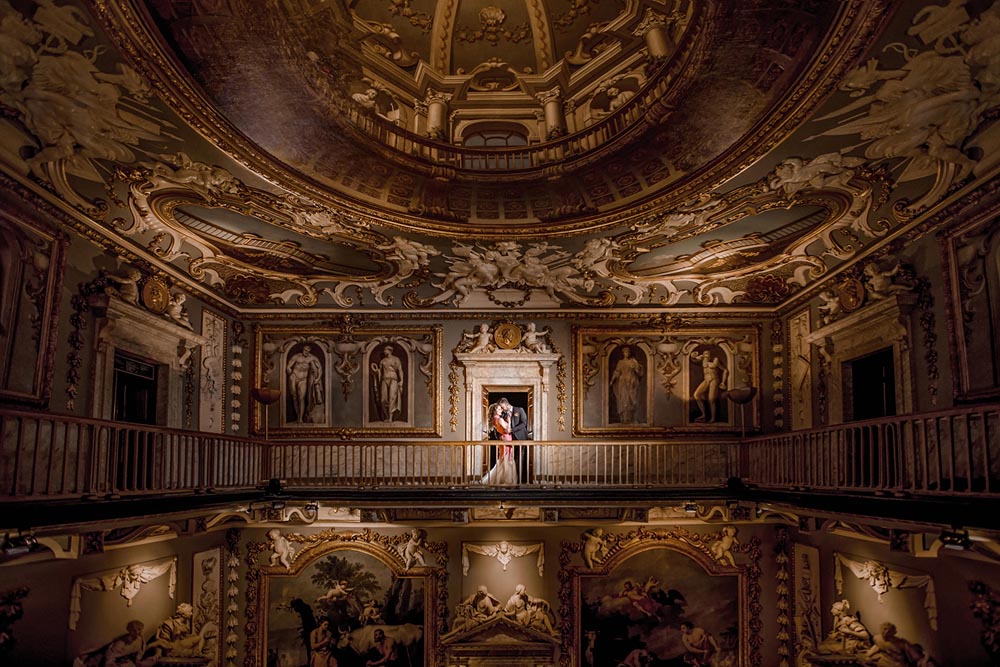
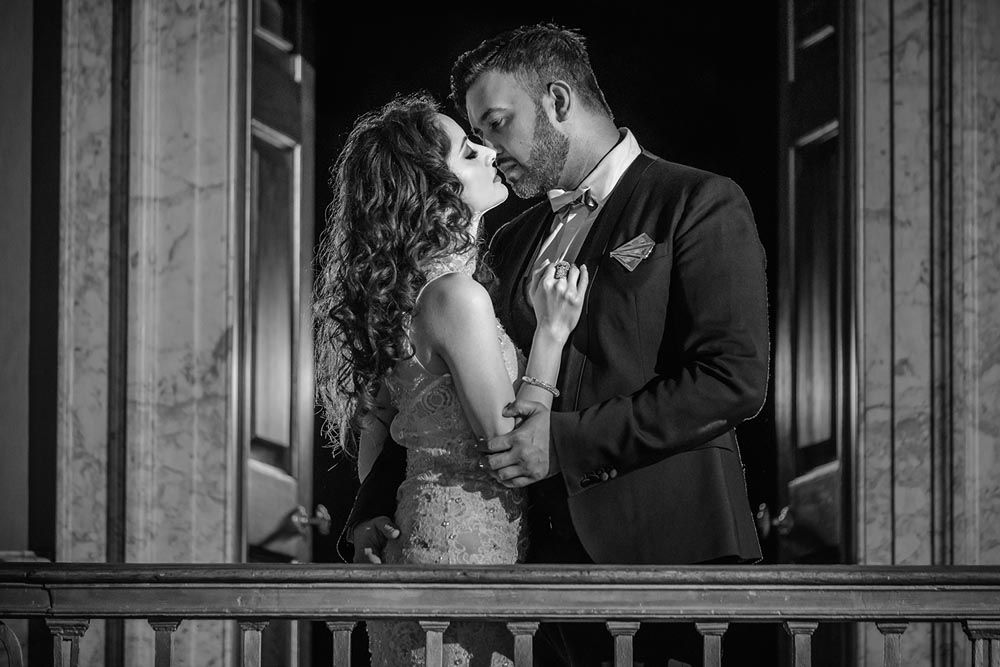
When you have a couple with such a unique look and so much style in a stunning venue like this, your judgement is really put to the test because as an artist and a professional you need to strike a fine balance between concept, emotion and technical decisions. Just by knowing the couple and the kind of people they are, I wasn’t afraid to portray their love and lust for each other. Through this you also get a sense of their style, demeanour and swagger… and that’s just the posing!
Posing is just part of the concept however; composition, framing and lighting all contribute. Clearly a wide-angle image was required with all of that beautiful detail of the interior; this dictated the framing and light shaping of the first image. Anything other than outright perfection in the symmetry is unforgivable so it was necessary to set up a tripod here especially with a lens like the 16-35mm which will punish you with the slightest misalignment. Secondly when you have such a wide scene in a dimly lit environment, any light you add should be shaped with care or you’ll have to contend with unwanted light spill and shadows that will ruin the careful balance you’re trying to create.
In this image I faced another interesting challenge which was to light them from across a 25m gallery without having the light stand in the photo (and I generally favour in-camera techniques over the composite approach for anything other than large stylised group portraits and automotive work). This meant that my light which was a Profoto B1 had to be behind the camera and therefore as high as possible and as far to one side of the camera to create separation as personally dislike flat lighting.
This is a rather long way to throw light, so to avoid lots of unwanted light spill I used a snoot to contain the light on the couple with the light set as high up as the ceiling would allow. A second gridded Profoto was set at a nominal output behind the couple to create some separation between them and the background with a delicate rim-light.
What this careful crafting of the scene meant was that I could switch to a tighter focal length using the same camera settings to really draw attention to the beautiful tension between the couple with a slight tweak of the pose and so you gain two very different yet striking images from one setup.
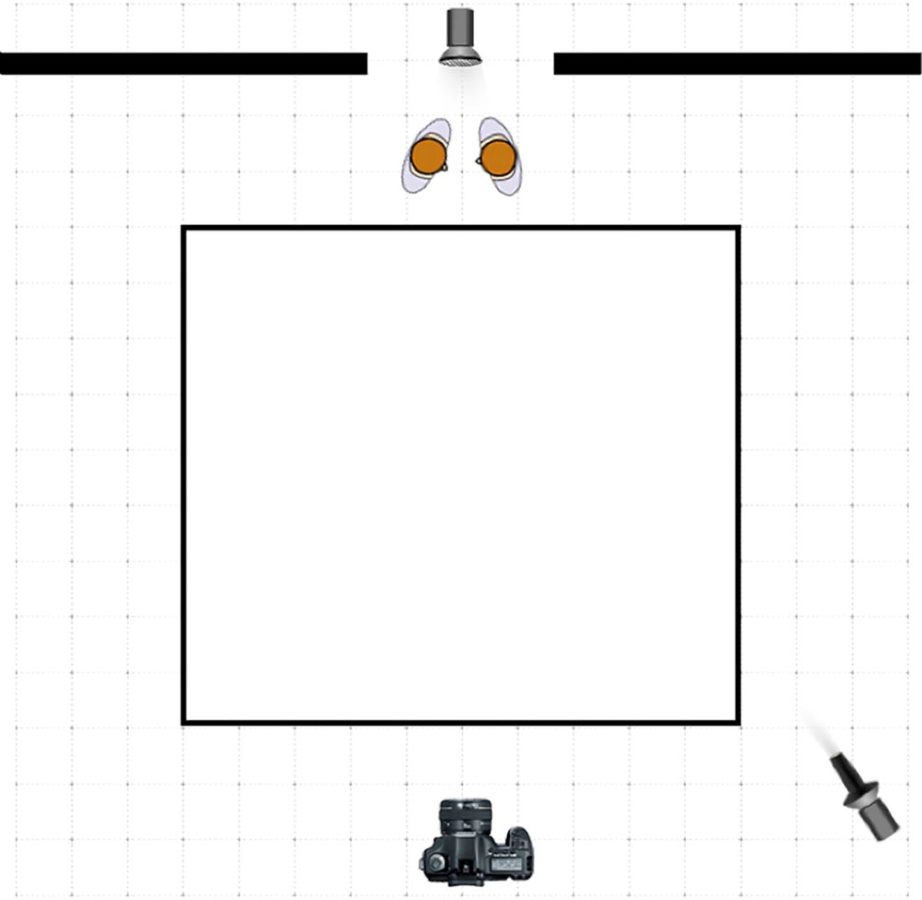
MOVING FORWARD…
I hope I’ve demonstrated that camera settings and light setups are only a part of the story, and the core of the story is the thought process behind the photo.
Try to use the story of the couple, the scenario in which you’re setting up the photo and the story behind what inspired you at that time so that you can create a photo that will withstand time and the pressures of a fierce industry – because ultimately, provenance is authenticity and cannot be denied and can withstand cursory comparison.
There is so much more I’d love to share with you, alas, every article must have an ending; but feel free to reach out if you want to know more and gain more insight though my various modes of training… or just to say “Hi!”
Thank you reading and I hope you enjoyed it as much as I enjoyed writing it.
– Sanjay
You can see more of Sanjay’s work at EyeJogia.com, and keep up with him on Facebook and Instagram.



